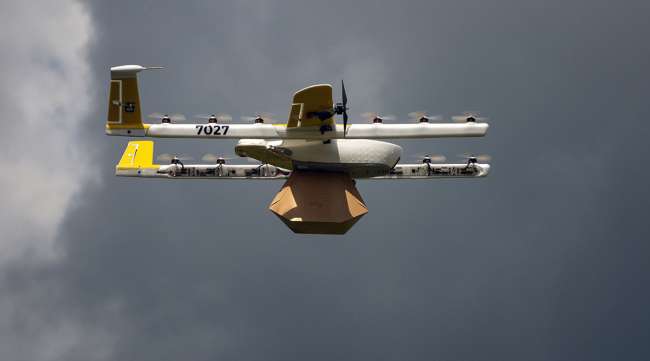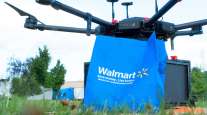Alphabet’s Wing Nears 100,000th Package Delivery

[Stay on top of transportation news: Get TTNews in your inbox.]
Alphabet Inc.’s Wing subsidiary is about to reach a milestone in the fledgling drone-delivery business: Any day now it will deliver its 100,000th package to a customer.
At its busiest delivery hub, in Logan City, Australia, the company earlier this month set a new internal record of 4,500 deliveries in one week. The system will one day be a far more efficient mode of transporting goods to people’s homes than what exists today, according to a top executive.
MORE DRONE NEWS: UPS starts drone delivery of vaccines
“We’re extremely bullish on our ability to offer this service at a lower cost than ground delivery very profitably over time,” Jonathan Bass, Wing LLC’s head of marketing and communications, told Bloomberg News. “You can begin to look at this and extrapolate to what drone delivery will look like in urban and suburban environments around the world.”

How much impact does driver pay have in hiring drivers? And what else can fleets do to recruit and retain quality talent? Hear a snippet from DriverReach founder and CEO Jeremy Reymer, above, and listen to the full program at RoadSigns.TTNews.com.
Even as government regulators in the U.S. and elsewhere hash out technical requirements for this new class of flying machines, Wing is expanding rapidly. In addition to existing test sites in Australia, Virginia and Helsinki, it has plans for deliveries at an undisclosed new location in the U.S., according to an emailed statement.
The potentially tectonic shift to routine deliveries of sandwiches, cups of coffee and rotisserie chicken remains a long-range goal as regulators in the U.S. and elsewhere wrestle with how to craft rules.
The U.S. Federal Aviation Administration, which oversees the world’s busiest airspace, just finalized a set of basic technical standards for how drones should be tracked with radio beacons. In recent months, it convened a panel of industry representatives to help develop critical rules for how unpiloted devices can fly long distances safely.
Wing — along with several other companies, including Amazon.com’s Prime Air and United Parcel Service Inc. — has received various levels of approval from the FAA to conduct tests in the U.S.
Owing in part to more restrictive rules by the FAA, Wing’s demonstration project in Christiansburg, Va., has been used to test various deliveries, from Girl Scout cookies to library books. Bass declined to provide statistics for deliveries in the U.S.
He did predict an expansion in the U.S. without citing a location as well as a similar effort in Finland. The company for the first time said it has plans to expand delivery tests outside of its Virginia location.
“We’ll expand quite a bit in the United States in the next few months, I expect,” Bass said.
A separate site in Canberra, Australia’s capital, is also growing quickly and currently makes more than 1,000 deliveries a week, Bass said.
Both the materials cost and the operations cost over time we expect to be dramatically lower than ground delivery.
Jonathan Bass, Wing LLC’s head of marketing and communications
Wing hasn’t released detailed financial information and Bass said only that the company doesn’t yet charge customers for deliveries. “We’re investing in growth today,” he said.
One of the most popular products for Wing deliveries is a simple cup of coffee. The company delivered 10,000 coffees in Logan City last year.
The company says its 100,000-delivery milestone represents real products sold to customers, and doesn’t count practice runs.
Another popular item is roasted chicken, known in Australia as a “hot chook.” The chickens are at the upper limit of what Wing’s drones — which are half-copter, half-plane hybrids — are capable of carrying. The limit is about 3 pounds to a location about 6 miles away, he said.
Customers can order online and Wing is increasingly automating flying operations, using computers to simulate the most efficient routes and allowing a single human to simultaneously monitor multiple drones at the same time.
“The system itself, the components of the aircraft and the aircraft are relatively inexpensive,” Bass said. “It’s very quick and easy to set up. Both the materials cost and the operations cost over time we expect to be dramatically lower than ground delivery.”
Want more news? Listen to today's daily briefing below or go here for more info:





